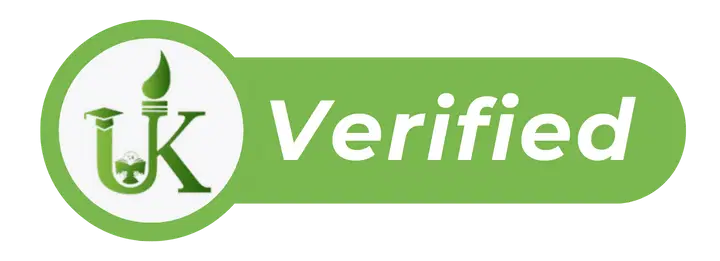Eligibility Criteria and Fee Structure for Bachelor of Vocational (B.Voc.) Medical Imaging Technology at Shri Krishna University, Chhatarpur
Shri Krishna University, Chhatarpur is one of the popular educational institutions in India. It offers many programs, including the Bachelor of Vocational (B.Voc.) Medical Imaging Technology. It is a popular course in India with various career options. Most of the candidate pursue this Bachelor of Vocational (B.Voc.) Medical Imaging Technology degree from Shri Krishna University with aspiration of getting good jobs at top companies with lucrative salary packages. However, they need to fulfil some prerequisite eligibility criteria for admission to Bachelor of Vocational (B.Voc.) Medical Imaging Technology at Shri Krishna University, Chhatarpur. The eligibility criteria and fee structure for the Bachelor of Vocational (B.Voc.) Medical Imaging Technology at Shri Krishna University, Chhatarpur can vary from other universities.
Here is a detailed overview of the Shri Krishna University, Chhatarpur Bachelor of Vocational (B.Voc.) Medical Imaging Technology eligibility criteria and fee structure:
Eligibility Criteria for Bachelor of Vocational (B.Voc.) Medical Imaging Technology at Shri Krishna University, Chhatarpur
Before you can join the Bachelor of Vocational (B.Voc.) Medical Imaging Technology at Shri Krishna University, Chhatarpur, you need to meet certain requirements. These are known as eligibility criteria. These criteria ensure that students have the necessary background and skills to succeed in the program. Students who fulfil the Shri Krishna University, Chhatarpur Bachelor of Vocational (B.Voc.) Medical Imaging Technology eligibility criteria will only be considered for admission. Below are the general eligibility requirements:
- Educational Qualification: You must have a previous educational degree in relevant filed from a recognized institution.
- Minimum Marks: You should have scored at least 50% marks in your last academic exam. For some special categories (like SC/ST), the minimum marks requirement is 45%.
- Accepted Exams: You may also need to clear some of the entrance exams as per required by the college for admision to this course.
- Age Limit: Certain courses have specific age requirement at various colleges. However, there is no age restrictions for pursuing Bachelor of Vocational (B.Voc.) Medical Imaging Technology at Shri Krishna University, Chhatarpur.
- GD and PI: Some times colleges also organise Group Discussion or personal interview round for the candidates. You may be called up for a GD or PI round during the counselling process.
Fee Structure for Bachelor of Vocational (B.Voc.) Medical Imaging Technology at Shri Krishna University, Chhatarpur
Understanding the fee structure is crucial for planning your finances. The fee structure for Bachelor of Vocational (B.Voc.) Medical Imaging Technology at Shri Krishna University, Chhatarpur, is designed to be competitive and reflective of the quality education provided. Here is a detailed breakdown of the fees:
- Admission Fees: A one-time admission fee is payable at the time of enrollment at Shri Krishna University for Bachelor of Vocational (B.Voc.) Medical Imaging Technology. This fee covers administrative expenses related to the admission process.
- Examination Fees: Examination fees are typically charged per semester. The fee covers the cost of conducting exams, evaluation, and certification.
- Hostel Fees: Shri Krishna University, Chhatarpur, offers on-campus accommodation for students. The hostel fees depending on the type of accommodation chosen. This fee includes lodging, basic utilities, and access to common facilities.
- Laboratory and Library Fees: Some courses may require use of laboratories and libraries. This fee ensures that Shri Krishna University students have access to state-of-the-art facilities and resources.
- Miscellaneous Fees: Other fees may include charges for sports facilities, health services, and extracurricular activities.
- Tuition Fees: The annual tuition fee for Bachelor of Vocational (B.Voc.) Medical Imaging Technology covers the cost of instruction, access to laboratories, libraries, and other academic resources.
- Scholarships and Financial Aid: Shri Krishna University, Chhatarpur, offers various scholarships and financial aid options to meritorious and needy students. These can significantly reduce the financial burden. Candidates are encouraged to apply for scholarships based on their academic performance and financial need.
Detailed Fee Breakdown
Payment Options
- Instalments: You can pay the fees in instalments. This can make it easier to manage your finances.
- Loans: Many banks offer education loans for students joining Shri Krishna University, Chhatarpur. The university can assist in the loan application process.
Choosing to pursue Bachelor of Vocational (B.Voc.) Medical Imaging Technology at Shri Krishna University in Chhatarpur is a significant decision that requires careful consideration of the eligibility criteria and fee structure. Choosing to pursue Bachelor of Vocational (B.Voc.) Medical Imaging Technology at Shri Krishna University in Chhatarpur is a significant decision that requires careful consideration of the eligibility criteria and fee structure. Make sure that you understand the eligibility criteria and fee structure for Bachelor of Vocational (B.Voc.) Medical Imaging Technology at Shri Krishna University, Chhatarpur before you apply for admission.
This guide is aimed to help you understand the Shri Krishna University, Chhatarpur Bachelor of Vocational (B.Voc.) Medical Imaging Technology eligibility criteria and fee structure. If you have more questions, you can visit the official Shri Krishna University, Chhatarpur website or contact their admissions office directly.
 3 Years
3 Years
 Under Graduate
Under Graduate
 Vocational
Vocational



 back
back